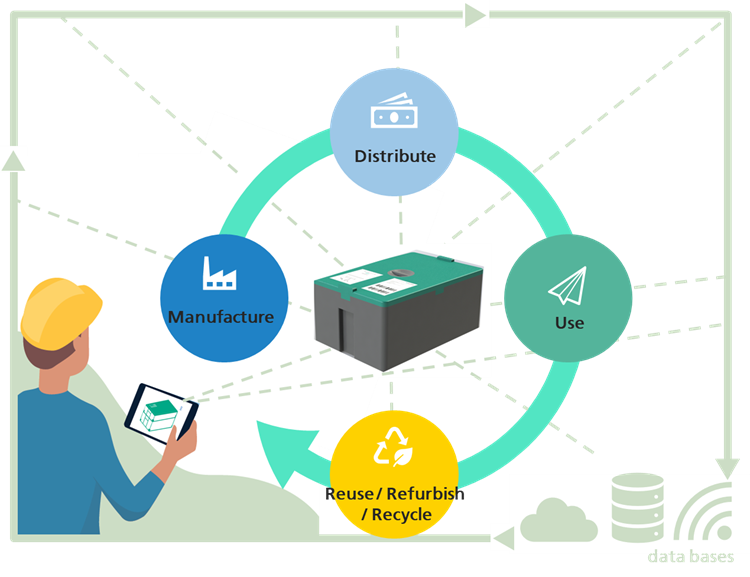Do you know the life cycle of your products properly?
Most companies know where and in what condition their products are at any given time. At least when it comes to production and distribution. However, they have little to no information about the further life cycle of their products and therefore give away economic and ecological potential.
Nowadays, many used products end up unused in the cellar or are “given away” by the end user, who has no further use for them, to a disposal company or recycler. Due to a lack of sufficient information, for example regarding dismantling possibilities or material composition, the recycler can often only recycle them into inferior applications. This results in economic and ecological losses.
With a digital twin as a decision-making basis for taking back products that are no longer used or defective, production companies can reduce their need for new materials and components, conserve natural resources and improve their eco-balance. At the same time, they find in their customers “suppliers” of precisely fitting spare parts and materials that they can use for the manufacture of new products. Current information about the location and processing status of an individual product, available at any time, enables many companies to be flexible and
make decisions with confidence in their planning and manufacturing processes. However, this knowledge usually ends with the distribution and handover of the product to the customer.
A digital twin can change this. It enables the detailed recording and mapping of relevant status information on an individual product throughout its entire life cycle. The linking of product-specific, current information of the digital twin with the quantities of already existing information from higher-level systems (e.g. from weather data banks or WMS systems) enables economic and ecological added value. How often has the product been used? Is it worth taking the product back from the customer at the end of a use phase in order to reuse or recycle components or materials? These are just a few questions to which the digital twin can provide an answer. The increase in information quality and transparency along the entire product life cycle creates the basis for improvements and innovations in a wide variety of areas. Customer needs can be better understood and served, service offerings optimised. Increasingly relevant business models, such as product-service or pay-per-use systems, can be implemented effectively and successfully.
Fraunhofer CCPE supports companies on their way to the digital twin in order to tap into the associated potential. Contact us, we will also make your product digital.
